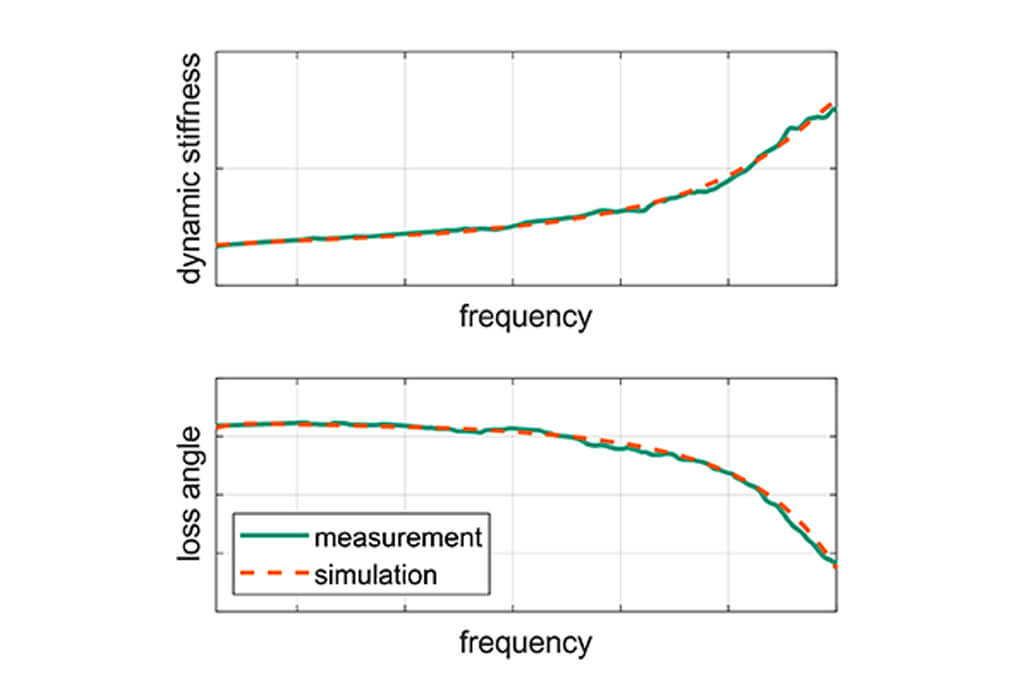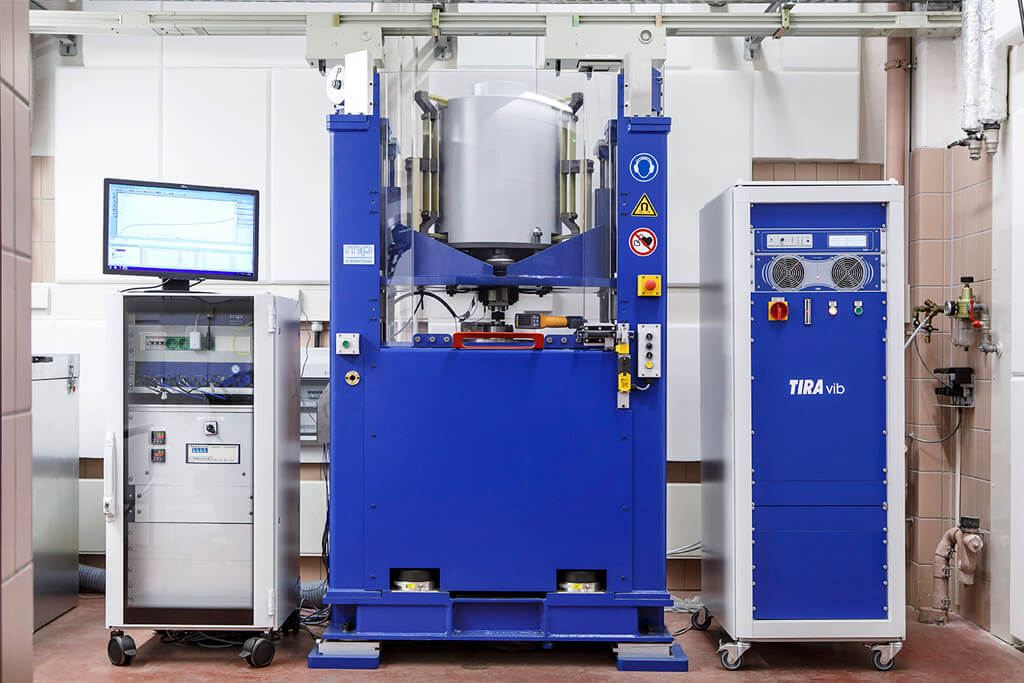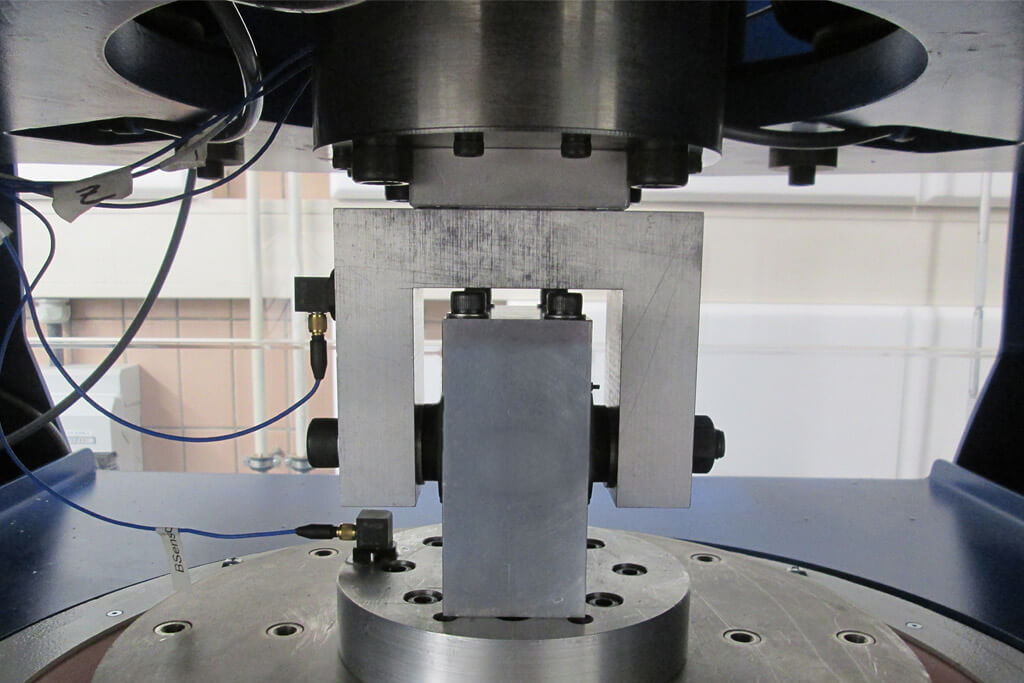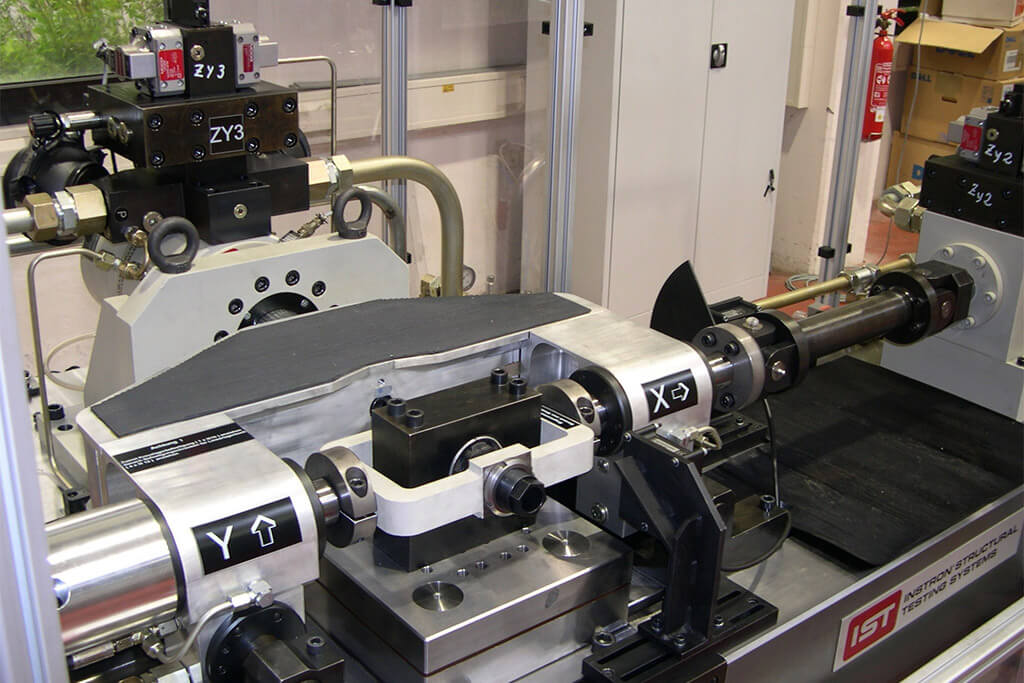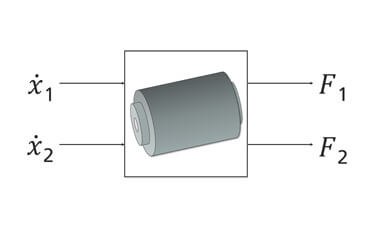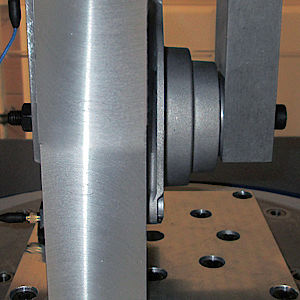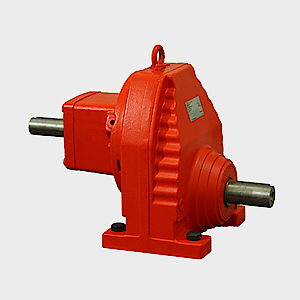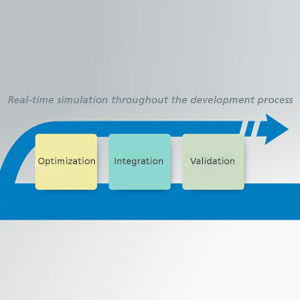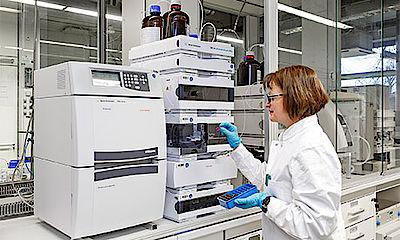High frequency characterization and numerical simulation of elastomer mounts.
Dynamic elastomer characterization, elastomer modeling, NVH design
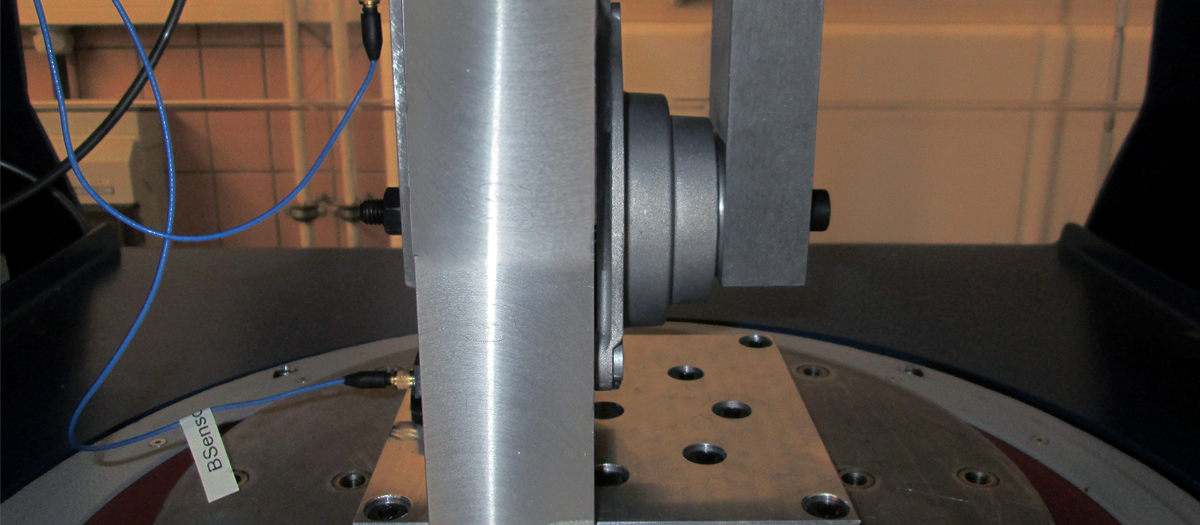
In the design process of new vehicles, the chassis NVH behavior plays an increasing role. Therefore, elastomer components used in vehicles suspensions are designed not only with regard to low-frequency vibrations in terms of primary ride, but also regarding their acoustic properties in the high-frequency domain. Thus, a detailed knowledge of their dynamic behavior is essential. The aim of the project was to experimentally characterize elastomer mounts used in an automotive suspension and derive multiaxial numerical models for them, which enable a fast and efficient holistic system simulation on vehicle level.
Low-frequency characterization
Several elastomer mounts were mechanically characterized in the frequency range below 50 Hz in all six degrees of freedom under various preloads and for different amplitudes, using servo-hydraulic test-rigs. From these measurements, the dynamic stiffness and corresponding loss angle were derived for each setup, enabling to investigate the different effects implied by varying parameters like preloads etc. Moreover, static tests were performed to determine the static behavior of the mounts and their nonlinear stiffness curve.
High-frequency characterization
All elastomer mounts were subsequently characterized in the high-frequency domain from 50 Hz up to 2000 Hz, using a unique electrodynamic high-frequency test rig.
In order to avoid resonances in the test environment a lot of engineering effort had to be applied to designing both lightweight and stiff adaptors connecting the elastomer mounts to the test-rig. Based on the force and acceleration measurement data the dynamic stiffness and loss angle of the elastomer mounts were determined for each degree of freedom.
High frequency modelling – highly efficient simulations
Finally, parametrical and numerically very efficient models were derived for all elastomer mounts for each degree of freedom, using fractional derivatives to describe the dynamic elastomer behavior.
In order to parametrize the models according to measurement data, a partly automated procedure featuring an optimization algorithm was developed and applied.
Measurement and simulation data show very good coherence in a broad frequency range. With the compact models derived, highly efficient simulations of the chassis NVH behavior in time domain have been made possible.
Numerical model of elastomer mount.
An impedance formulation was chosen as modelling approach. The resulting forces are calculated based on the velocities of the two coupling points. This is being done independantly for all six degrees of freedom (three translational and three rotational degrees of freedom). With this modularised description a very easy integration into wholistic simulation models is possible.
• NVH Research Lab
• Hyundai Motor Company

“Through the collaboration with Fraunhofer LBF we sustained our understanding regarding the investigated elastomer mounts and we are now able to integrate them with highly efficient models in our full-vehicle NVH-simulation-environment.” Research Fellow Dr. Kang-Duck Ih
NVH RESEARCH LAB
Hyundai Motor Company
- Dr.-Ing. William Kaal
- Phone: +49 6151 705-440
- william.kaal@lbf.fraunhofer.de
